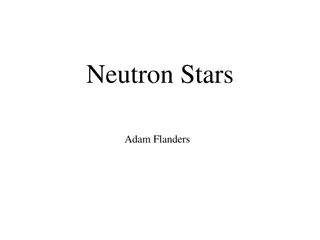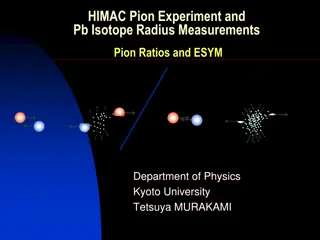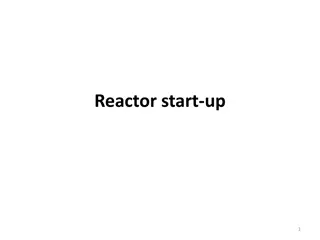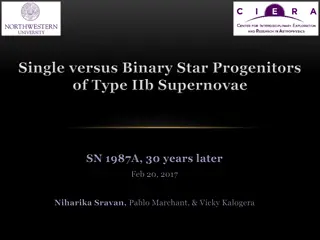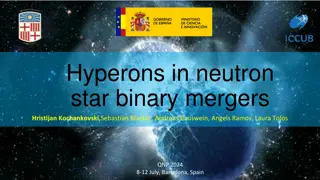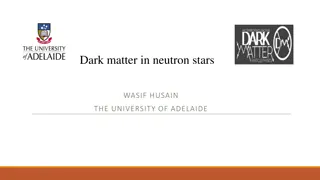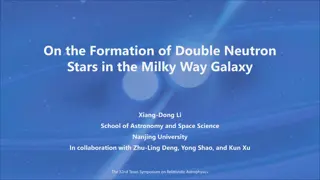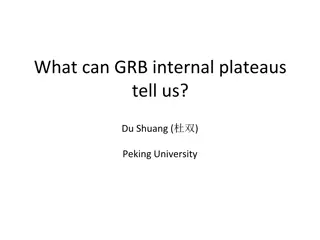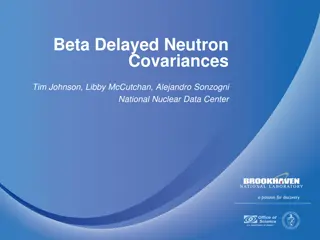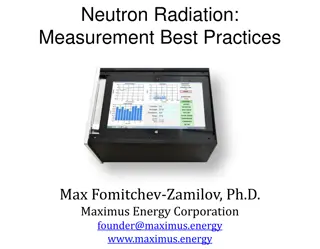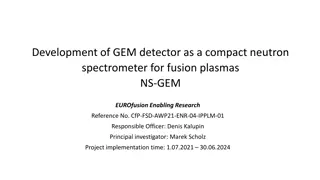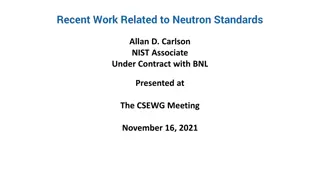Neutron Star Upper Mass Limits from GRBs and GWs Research Insights
Analysis of neutron star upper mass limits derived from gamma-ray bursts (GRBs) and gravitational waves (GWs), indicating constraints on mass thresholds for NS-NS or NS-BH mergers. The study explores implications for LIGO detection rates, jet behaviors, and collapse scenarios. Future work suggestions include enhancing instrumental sensitivity and investigating electromagnetic and gravitational wave signatures of collapse events.
Download Presentation

Please find below an Image/Link to download the presentation.
The content on the website is provided AS IS for your information and personal use only. It may not be sold, licensed, or shared on other websites without obtaining consent from the author.If you encounter any issues during the download, it is possible that the publisher has removed the file from their server.
You are allowed to download the files provided on this website for personal or commercial use, subject to the condition that they are used lawfully. All files are the property of their respective owners.
The content on the website is provided AS IS for your information and personal use only. It may not be sold, licensed, or shared on other websites without obtaining consent from the author.
E N D
Presentation Transcript
Neutron Star Upper Mass Limits from GRBs and GWs M. Coleman Miller University of Maryland Lawrence, Tervala, Bedaque, Miller arXiv:1505.00231 1
The Idea C. Fryer et al. arXiv:1504.07605 S. Lawrence et al. arXiv:1505.00231 Short GRBs are thought to be from NS-NS or NS- BH mergers If NS-BH, LIGO rates go up! If NS-NS, need rapid collapse, or -driven wind will load the jet with baryons and lengthen burst Thus NS+NS mass must exceed maximum for rotating star (we assume uniformly rotating) This also places an upper limit on the mass of a slowly rotating star (both depend on EOS) Maximize using parameterized eqns of state More precise if masses determined from GWs 2
Example Results Assume remnant rotates at mass- shedding limit Mch alone gives good Mtot estimate Lowest Mch that we see will place strongest limit Adapted from Lawrence et al. (2015) 3
Useful Future Work Instrumental High-freq sensitivity! E.g., squeezed light Get both masses independently Theoretical EM signature of collapse seen more broadly that GRB? Increase coincidences Argument that collapse happens during differential rot? (Margalit et al., in prep) Direct GW signature of collapse? 4


